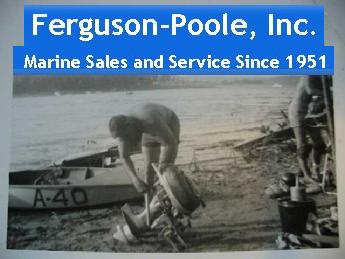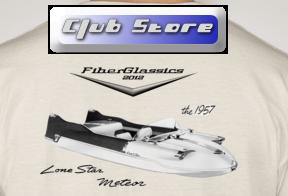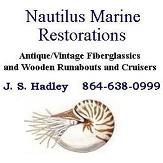The FiberGlassics® Wiki is a community project that is open to all registered users of Fiberglassics. Guests and members can view articles, however "Editors" can create articles and documents to contribute to the project.
The project attempts to classify, describe and document the classic fiberglass boats of the 50's and 60's through the use of articles, links and relevant media.
All content is viewed by the community for accuracy and you are encouraged to contribute by submitting articles via the Contact Us form. Once your article has been reviewed, it will be published and you can become an "Editor" if you wish to continue contributing.
One of the main purposes of this website is to document and research classic boats. To that purpose, there are several tools that we use:
- Articles on boating topics. These can be found on the left menu under Glassic Concepts in the Articles. These articles are written and contributed by members. You may submit content also, see below.
- The Library. This contains the main content of our research. Here you will find a manufacturers database of classic boats, their history and related items. The Library is a wiki which also allows members to contribute.
- The Forums. These discussion forums contain much information that has been discussed since 1998. They are in sections: current forums and archived forums. For research in the archived forums, you must use the search within that archive as the Site Search from the Glassic Concepts menu will not search within the archived forums.
- User Profiles. As members fill in their profiles, they have the option of checking the make of boat that they own. These members can be a valuable resource for members who need specific information from owners of the same type of boat.
Read more: Research at Fiberglassics
Honeycomb Cores
Nidacore was mentioned earlier. So was Airex. There are others as well, but this section should not be read as an endorsement of one over the other. My experience is with the two that were mentioned so I'm going to speak from that perspective.
Honeycomb cores are the next generation of core materials and, even though they are both costly and not always readily available, I think these are the first evolution of fiberglass construction that is, hands down, a distinct improvement over standard organic cores.
The honeycomb material is made from polypropylene which has good points and bad points.
Polypropylene is plastic. It's the same plastic used to make extruded parts and cheap children's toys. It's also spun, braided, and used to make two ropes and safety lines for boats because it's stretchy and it floats. Understanding these qualities of polypropylene should help you understand it's qualities as a core material.
First let's look at the mechanical aspects of these cores. They are honeycombed, but why is that good or bad? Well, a hexagonal support structure between two fiberglass skins makes for a rigid sandwich that is protected from shearing in three directions.
The small hexagonal voids also become individual pockets in the structure. This means that if the boat should become punctured or water should penetrate the outer skin through improperly bedded hardware, the moisture will be confined to the compromised cell or cells and won't wick through the entire core like it would with organic materials.
Because these cores are mostly air surrounded by a latticework of I-beams, they are also very light. Sandwiching a honeycombed core material to the backside of an unsupported solid fiberglass panel, such as the fore deck of a small runabout, will greatly improve the structure without adding much weight.
Honeycombed cores have excellent impact resistance too. Because it's made out of a semi-elastic plastic, a sharp impact to a cored material will first cause the core to compress, then spring back to its original shape. These are the reasons this core material is so prevalent in many hull constructions.
How about for transoms? This is where they're not recommended. A transom, as reiterated countless times so far, requires high shear strength and high compressive strength. Polypropylene cores have multi-directional shear strength but it's not particularly high. It also has fairly low compressive strength.
Another factor at play with these materials is the layering necessary for excessively thick panels. A transom is often the thickest panel on a boat because it requires the greatest strength and rigidity.
Honeycombed cores over an inch thick can become weak and collapse. When using these cores on thick panels, it's necessary to layup two successive layers of core material separated by a central layer of fiberglass, essentially turning the sandwich construction into something closer to a club sandwich construction; outer skin – core – central skin – core – inner skin.
This does provide and extra layer of protection if the panel should be punctured, but it is labor intensive and, in the end, over-engineered and no better than using an alternative core material.
Pourable Cores
I've saved this for last because I want the reader to pay close attention to this section and to remember it.
Side note: Years ago, when I was working on a casino boat in the Florida Keys, the company owners hired an outside consulting firm to come to the boat and teach all the supervisors tricks for training new employees. In one demonstration, the consultant read a list of twenty random items; pencil, elephant, razor, hat,...
We had to wait for sixty seconds, then right down as many as we could remember. Most people could remember between 6 and 10 of the items. Interestingly, every single one of us remembered two specific items. The reason we all remembered these items is because they were the first and the last items mentioned.
When people are given too much information at once, they can't digest it all so they remember what stands out to them. For most people, this is the beginning, the end, and something interesting in the middle.
This trick has always stuck with me and I'm using it here by in the hope that it will stay in the mind of the reader.
Pourable cores are good but not as good (or as easy) as most people believe.
The concept is an easy sell to a Do-It-Yourselfer. Dig out the old core leaving the fiberglass skins in place, then mix up the pourable core and fill the void. In a perfect world, the core is perfectly bonded to the skins and the repair is a permanent solution.
Like most things that promise too much, it can't always deliver.
Before I continue, I want to stress that, prepped and used properly, pourable cores really can deliver what they promise. It's the prep they gloss over in the manufacturer's literature.
Let's start with what it is. Pourable cores are basically straight resin thickened to a point where it will fill gaps like a fairing compound, but not so thick that it can't be poured. It can be structurally improved by adding bits of chopped fiberglass strands, and its resiliency can be improved by adding elastic polymer fillers to the mix.
Up to this point in the book, MEKP has been listed as the only hardener for use with polyester and vinylester resins, and proprietary hardeners listed as the only option for epoxy resins. Pourable transom cores use a different kind of hardener, Benzoyle Peroxide (BPO) because it generates less heat in the curing process (which also slows down the curing process).
If you tried to make your own pourable transom using polyester, vinylester, or epoxy with the hardeners typically used, you would probably burn your boat down to the ground. The volume of resin would generate so much exothermic heat that it would almost certainly catch fire.
I'm telling you this because it's very likely someone will think, “If it's just resin, I can do it myself.”
BPO is not a suitable alternative to other catalysts mentioned in this book and should not be thought of that way. The only time it should be used is when it is expressly intended by the manufacturer. In this book, this will be the only mention of BPO as a catalyst.
Here are my problems with pourable transom cores:
First, like prepping any fiberglass area for repair, the surface must be contaminant free. This is done by grinding down to bare glass, vacuuming out the dust, and cleaning the fresh surface with either acetone or denatured alcohol. If the surface hasn't been prepared in this manner, the bond will be questionable at best.
The problem is, without removing either the inner or outer skin, the inside surfaces cannot be adequately prepared for the new core. The tools don't yet exist for abrading, cleaning, and solvent wiping an area that is five feet wide, two feet deep, with only an inch and a half of clearance.
Trying to avoid the removal of a fiberglass skin will result in poorly bonded sandwich construction. When fiberglass is not bonded to the core, the result is a transom that is only as strong as the thickness of a single skin. This is an impending transom failure.
On the other hand, if one of the skins is removed, providing access to the inside surface of both skins, then they can be adequately prepared and the removed skin glassed back in place. When done in this manner, a pourable transom is the best, strongest, and easiest for the at-home boat restorer.
Solid Composite Cores
Side note: Again, this is a product with which I am familiar. There may be alternatives under different brand names, but I am not aware of them.
A solid alternative to Urethane foam is Coosa Board. Now we're talking about something that's appropriate for transoms. Coosa Board is basically micro thin layers of fiberglass laminate built up to be a specific thickness. It can be purchased from the factory in varying densities and weights depending on its intended purpose. It is perfectly compatible with fiberglass, it will never rot, and it has fantastic compressive and shear strength.
Coosa Board is a suitable replacement for any wood core on a boat, from transoms to stringers, to bulkheads to floors. What's more, it's compatibility with resin and its imperviousness to rot make it the only true permanent solution to many of the problems associated with boats, both old and new.
So what are the downsides to Coosa Board? The same as all genuine improvements to the marine repair industry. It's expensive. It's prohibitively expensive. It's unrealistically expensive. But the price has come down since its introduction to the market, so that gives me hope.
Even with its high price, I always recommend it. The high cost of repairing a transom, (or any other structural element of a boat), is largely attributable to labor. Using an expensive core material like Coosa Board might change the total bill from $2,000 to $2,200, but in that $200 difference is the peace of mind that comes from knowing the solution will probably outlive you.
Unfortunately, Coosa Board is not a panacea for all boats. Its rigidity makes it unsuitable for curved transoms. Additionally, it is hell on tools. The manufacturer states that it can be cut and shaped with standard woodworking tools, but that's only true if you plan on throwing the blades away at the end of the project. Blades will dull down to the nub in a hurry when working with this product. Still, it's worth it in my opinion.









